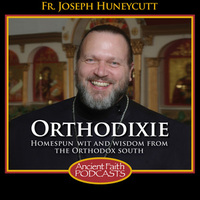 View from the Pew, Mary Adamski, Saturday, March 19, 2005
View from the Pew, Mary Adamski, Saturday, March 19, 2005
Conflicting calendars move Easter
Easter is early this year. That was the refrain from churches as they lagged in sending information for the Holy Week listings found on this page.
Last year, this most important Christian holy day was observed on April 11.
There was a confluence of religious observances that truly made for a Holy Week last year. Eastern, or Orthodox, Christians marked Pascha, the same event, on the same day as Western Christians, a synchronicity that won’t occur again until 2007.
Jews, who began their last Passover observance on April 4, 2004, won’t get to this year’s Seder meal until April 24.
Why are they all over the calendar this year? The answer: There are many calendars.
Starting with the most ancient, the Hebrew calendar begins with the month of Nisan, and Passover begins on the 14th night. It seems cut and dried but it isn’t.
Like many other ancient people who created lunar calendars, their pattern of alternating 30- and 29-day months lost time as each year of observing full moons progressed. They weren’t tracking the timing of Earth’s orbit around the sun.
“That means, in a year, the calendar is out of synch with the solar calendar by 12 to 18 days,” explained University of Hawaii professor Robert Littman.
“To make the lunar calendar coincide with the solar, there is a 17-year sequence. A leap month is added in years 0, 3, 6, 8, 11 and 14,” Littman said. “That means Passover can fluctuate from the very end of March to around April 23, probably the latest day in the solar year it could occur.”
The last month of the Hebrew calendar, Adar, ended, but Nisan is on hold. Here we are in the Hebrew leap month of Adar II. In another year the full moon that will occur Friday would herald the eight-day celebration of Israel’s liberation from slavery in Egypt. This month, it’s just another moon.
But for Christians that moon is part of the formula for calculating Easter. “The first Sunday after the first full moon after the spring equinox” was the model established in the Nicean council of church leaders in 325 A.D.
It sounds easy: Tomorrow’s the equinox, Friday’s the full moon and — ta-dah! — Easter is March 27.
Christians, east and west, were pretty much on the same page about that for centuries, even after the 1054 A.D. split between the Rome-based church and four Orthodox branches in the Middle East on political and theological issues.
At the time, they were all using the Roman solar calendar that was refined by Emperor Julius Caesar about 50 years before Jesus Christ was born. It fixed the date of the spring equinox to March 25. It also fixed the year at 365 1/4 days long, so it was 11 minutes longer than the true solar year, a glitch that has compounded through the centuries.
The Julian calendar was reformed in 1582 by Pope Gregory XIII. He dropped 10 days to reconcile the lunar and solar calendars — now that was a weird year — and set March 21 as the date of the vernal equinox.
Although the Gregorian calendar became the international calendar of commerce and secular life, Orthodox Christians stick with the Julian calendar when it comes to religion.
“Orthodoxy is unchangeable,” said the Rev. Nick Gamvas, dean of Sts. Constantine and Helen Greek Orthodox Cathedral of the Pacific. “The purpose was to preserve the tradition of Pascha, a Greek word that means Passover. It has come to mean Easter and Resurrection.”
Gamvas’ congregation just began its Lenten fast Monday, abstaining from meat, oil, dairy products, fish that contains blood, and wine. It’s another unchangeable, while Western Christianity’s version of fasting has been whittled down to meatless Fridays.
In the Julian calendar, Friday (March 25) is the equinox. So Easter won’t come until after the following full moon on April 24.
That’s the Jewish Passover, a link that has always been important to Christians. The Last Supper, which Jesus ate with his apostles just before his death, is believed to have been a Passover Seder.
Mary Adamski covers religion for the Star-Bulletin. Email her at madamski@starbulletin.com. © Honolulu Star-Bulletin — http://starbulletin.com
Thanks to FWD from Fr Victor Potapov.
For more on calculating Pascha’s date visit the Antiochian Webpage.











